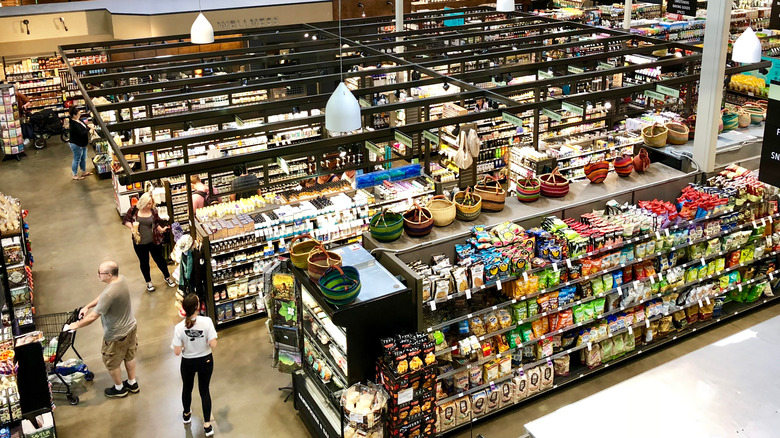Do Left-Handed People Actually Spend Less At Grocery Stores?
If you're left-handed, consider yourself a rare specimen. CNN illustrates that lefties compose just 10% of the population, while those smug righties make up the remaining 90%. What left-handers lack in numbers, they certainly make up for in smarts, with Healthline citing numerous studies that put southpaws above right-handed people regarding intelligence testing and cognition. If you need further convincing, consider some famous lefties throughout history, such as Leonardo Da Vinci, Aristotle, and Barack Obama.
When it comes to more mundane happenings, some claim that being left-handed offers an advantage while shopping. It's been stated that lefties spend less money than righties at grocery stores, probably because of all those bonus IQ points they're hoarding in their massive brains. All joking aside, there may be a practical reason for this claim which has more to do with grocery store design and layout in the U.S. than intelligence levels.
The reasoning behind grocery store design
A lot of thought and effort goes into designing grocery stores. The Center for Science in the Public Interest lists some tricks stores use to increase sales and garner greater customer interest. Placing tempting items like candy along checkout lines increases the chance of an impulse purchase. Common items are also displayed side-by-side to entice shoppers to purchase more than just what's on their shopping list. For instance, displays of boxed pasta often include things like sauce and cheese to delight customers with thoughts of a delicious dinner later.
Then there are end caps, which are displays situated at the ends of the aisle designed to catch the eye of shoppers. As explained by Oracle, these displays are associated with a 32% boost in sales when placed in an outside aisle. End caps are a crucial aspect of grocery store layout, but the direction customers travel upon entering the building is perhaps even more significant when it comes to sales.
Why left-handed people may have an advantage in grocery stores
It's hard to pin down legitimate statistics regarding handedness and how it impacts spending habits. However, there are verifiable differences between the experiences of left- and right-handed people. While claims of left-handed people being more accident-prone are hotly debated, per Psychology Today, it's undeniable that the world is designed for the majority. That means research showing higher accident rates for southpaws could decline if they were to use tools and equipment designed especially for lefties.
This same principle is likely behind the claim that left-handed people are more frugal when shopping. Retail Wire explains that most grocery stores in America are laid out to be traveled counterclockwise. Americans are naturally inclined to travel on the right side, possibly because of driving. Studies show that stores that utilize this directional flow hold customers' attention longer, providing more purchasing opportunities. While products are positioned within reach of a right-handed person's dominant hand, lefties do not enjoy the same easy access to goods on the shelves. Because items are not as accessible, lefties may have more time to consider their purchases.


